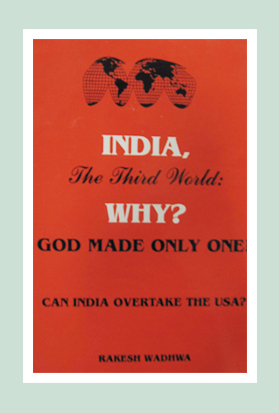Where is the Asian Casino Market Headed?

Possibly the biggest development for the Asian casino industry so far in 2018 has been the Japanese government’s approval of commercial integrated casino resorts in the country. Under the leadership of Prime Minister Shinzo Abe, Japan has now authorized the opening of three gambling properties in the country, with the tax on gross revenue set at 30% and ¥6,000 ($55) as entrance fee for foreigners.
Another Asian nation that has been steadily establishing itself as the next gaming capital on the continent is the Philippines. The growth of the gaming market in this country can be largely attributed to Manila’s Entertainment City, home to world-class hotels and casinos. The Entertainment City has not only driven a rise in tourism to the Philippines but also additional revenue for the nation. So, Macau definitely seems to be in for some competition.
Here’s a look at what else lies in store for the Asian casino and gambling industry in 2018 and beyond.
The Rise of the Orient
The Asian gambling market, especially in Southeast Asia, has been seeing growth over the last decade. The Monte Carlo of the Orient, Macau, is today viewed as the casino capital of the world, leaving Las Vegas behind. In fact, gambling tourism contributes a whopping 50% of Macau’s economy. But, as mentioned earlier, the competition is intensifying for Macau. Not only is the Philippines giving a push to its casino industry, Vietnam doesn’t want to be left behind either. In fact, two casino openings are in the offing for the Philippines, while Vietnam plans to open at least three new casinos.
On the other hand, even before Macau established itself as a hot gambling destination, Singapore was the best-known gambling destination in Southeast Asia. Although the country puts stringent restrictions on its own citizens with regard to entering and gambling in casinos, it continues to attract foreign tourists from the world over. The most popular destination in Singapore continues to be the Marina Bay Sands. In addition, according to Fitch Ratings’ casino market outlook, Singapore’s gross gaming revenue is expected to rise in 2018.
Rapid Growth
The fastest growing gaming market in Asia, however, is the Philippines. The country expects 9.4% growth in its gross gaming revenue in 2018 to 186 billion pesos. Even the casino attack that killed 36 people in Manila in 2017 didn’t seem to deter gambling enthusiasts, with the country recording a 7.6% increase in its gambling revenue for 2017.
On the other hand, in early 2018, the Vietnamese government overturned an existing ruling that had outlawed the local population from participating in gaming. In fact, there are some promising projects planned for the country’s special economic zones in Van Don and Phu Quoc. The largest casino project ongoing in Vietnam as of now is the US$4 billion Ho Tram Strip one, which on completion will include 5 integrated resorts and even a golf course.
What’s Driving this Growth?
One of the key drivers of increasing investments in integrated resorts and casinos is the rapidly growing Chinese tourist numbers. These are the people who account for most of the visitors to the resorts and casinos in Southeast Asia. And, Chinese casino tourism is only expected to grow with progress on the Belt and Road Initiative that will improve accessibility to various parts of Southeast Asia.
According to the Gambling Market in APAC 2017-2021 report by Research and Markets, the gambling market in the APAC region is expected to rise at a CAGR of 7.31% over the five-year period. The report attributes this growth to the increasing spending capabilities of people across the world. With increasing average per capita disposable income in the developed and developing countries, affordability and spending capabilities are on the rise too. This is especially visible in Asian countries, such as Vietnam, Indonesia and Malaysia.
With rising gambling trends, the future of the casino industry certainly seems bright for Asia in the foreseeable future.
 Rakesh Wadhwa. Ever since, I was a school boy, I knew India was on the wrong path. Socialism was just not what we needed to get ahead. Government controlled our travel; government controlled our ability to buy and sell; and government controlled our freedom to move our money. My life has focused on the inherent rights people have. When I was in college, I never understood, what the governments meant by their "socialistic attitude". If people are free to buy, sell and move their capital themselves without any restrictions by state, then the welfare of people is inevitable & hence the countries they live in will become wealthy. The government has no right whatsoever, to point a finger at me or my business. I am not a revolutionary. I just want to light up my cigarette and not get nagged about it. I believe in non-interfering attitude to attain more.
Rakesh Wadhwa. Ever since, I was a school boy, I knew India was on the wrong path. Socialism was just not what we needed to get ahead. Government controlled our travel; government controlled our ability to buy and sell; and government controlled our freedom to move our money. My life has focused on the inherent rights people have. When I was in college, I never understood, what the governments meant by their "socialistic attitude". If people are free to buy, sell and move their capital themselves without any restrictions by state, then the welfare of people is inevitable & hence the countries they live in will become wealthy. The government has no right whatsoever, to point a finger at me or my business. I am not a revolutionary. I just want to light up my cigarette and not get nagged about it. I believe in non-interfering attitude to attain more. 
 The Bastiat Award is a journalism award, given annually by the International Policy Network, London. Bastiat Prize entries are judged on intellectual content, the persuasiveness of the language used and the type of publication in which they appear. Rakesh Wadhwa won the 3rd prize (a cash award of $1,000 and a candlestick), in 2006.
The Bastiat Award is a journalism award, given annually by the International Policy Network, London. Bastiat Prize entries are judged on intellectual content, the persuasiveness of the language used and the type of publication in which they appear. Rakesh Wadhwa won the 3rd prize (a cash award of $1,000 and a candlestick), in 2006.
What the readers are saying…